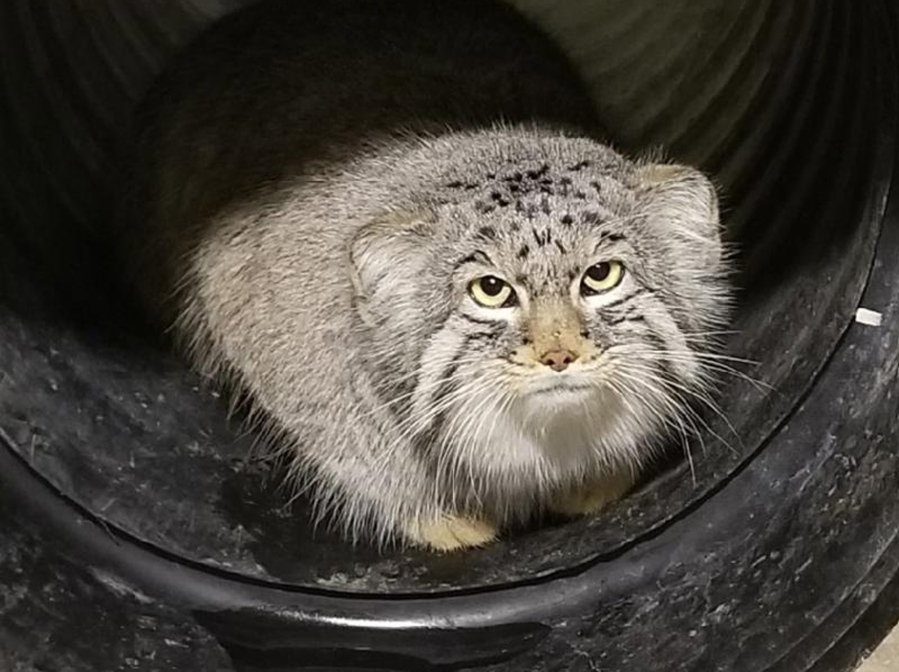SALT LAKE CITY (AP) — A small mountain cat was on the loose at the zoo in Salt Lake City on Monday, marking the second animal escape there in less than two years.
Zookeepers believe the Pallas’ cat likely climbed out past Plexiglas barriers and squeezed through a top layer of mesh to escape its enclosure, taking a similar route to a leopard that crawled out mesh topping a different enclosure in 2016.
The 10-month-old male Pallas’ cat isn’t dangerous and is believed to still be inside zoo grounds. Keepers discovered it was missing during morning rounds Sunday, Hogle Zoo spokeswoman Erica Hansen said.
At 8 pounds, (3.6 kilograms), it’s smaller than the average housecat, she said. Keepers spotted him overnight with thermal-imaging cameras and believe he’s contained in a maintenance area near his enclosure. The zoo was open for business as usual Monday.
Workers have set treats in multiple live traps and are planning to ramp up their efforts with cat sounds and scents at nightfall, when the animal is active, Hansen said.
“Our hope is he’s going to come back where the food source is easiest,” Hansen said. “We do have our work cut out for us because Pallas’ cats don’t like to be found. They’re very elusive, secretive kind of creatures.”
They want to capture the creature without causing it undue stress or fear, Hansen said. Pallas’ cats are a threatened species with thick fur native to the mountains of Central Asia that eat primarily rodents and birds.
The June 2016 leopard escape happened when a 60-pound (27-kilogram) cat squeezed through a larger, 6-by-6-inch opening at a different enclosure. The rare Amar leopard fell asleep on a nearby beam, where it was quickly spotted by a visitor and captured using a tranquilizer gun, Hansen said. The zoo re-opened after a one-hour lockdown.
“Experts still scratch their heads on how that leopard managed to fit herself through that,” Hansen said, comparing the feat to a golden retriever fitting through a space the size of a paper dinner napkin.
Since then, the leopard’s enclosure has been fitted with a finer mesh and she’s gone on to have cubs at the zoo, Hansen said.
Workers examined the mesh on other enclosures around the zoo after the 2016 escape, she said. Mushu had just finished his second day in an enclosure alone on Saturday. He was separated from his brother when he showed signs of aggression, which is common in cats that age, Hansen said. The zoo has kept Pallas’ cats for more than a decade, but Mushu and his brother are their first juvenile males, which tend to do more exploring.
Keepers have removed the other Pallas’ cats from the enclosure as it conducts a full investigation into what happened, Hansen said.




